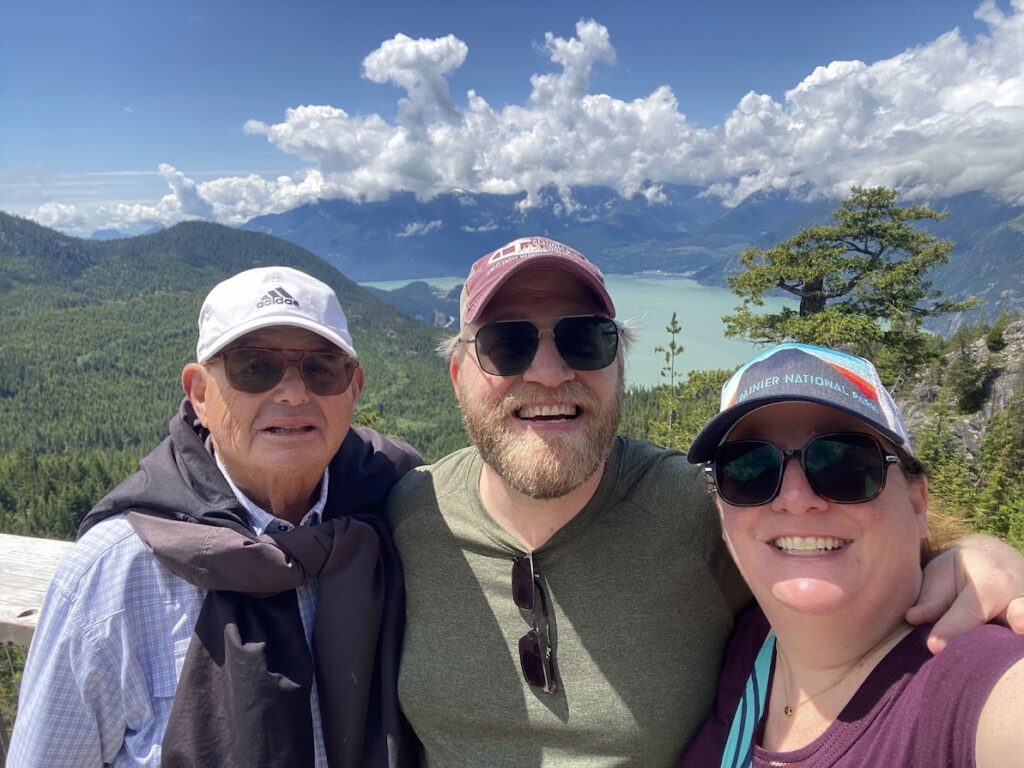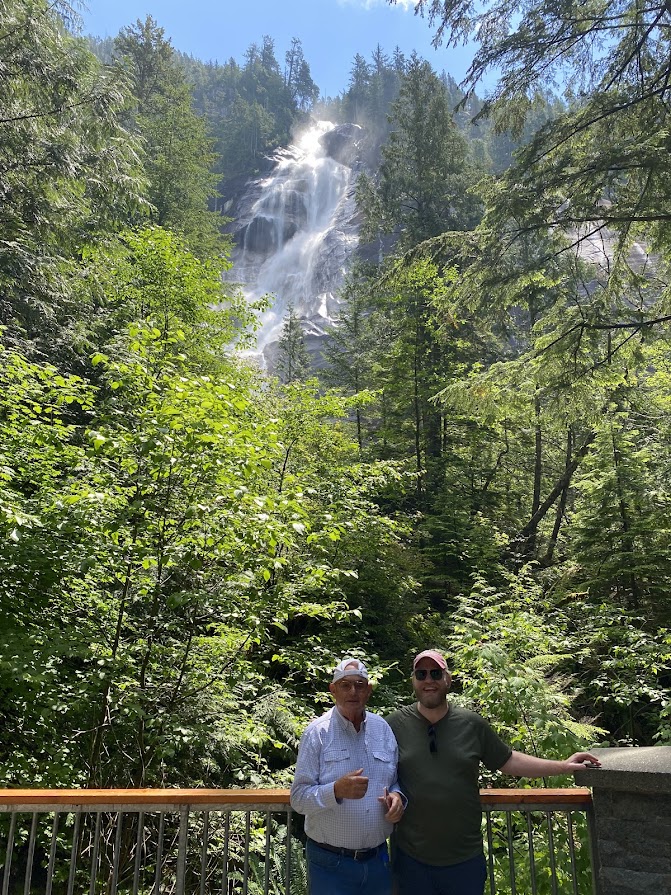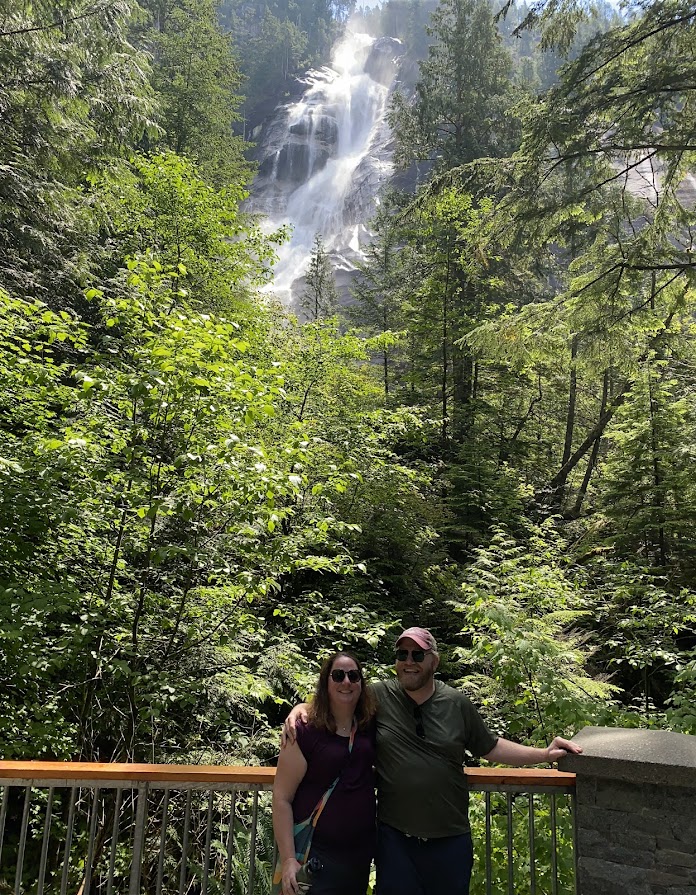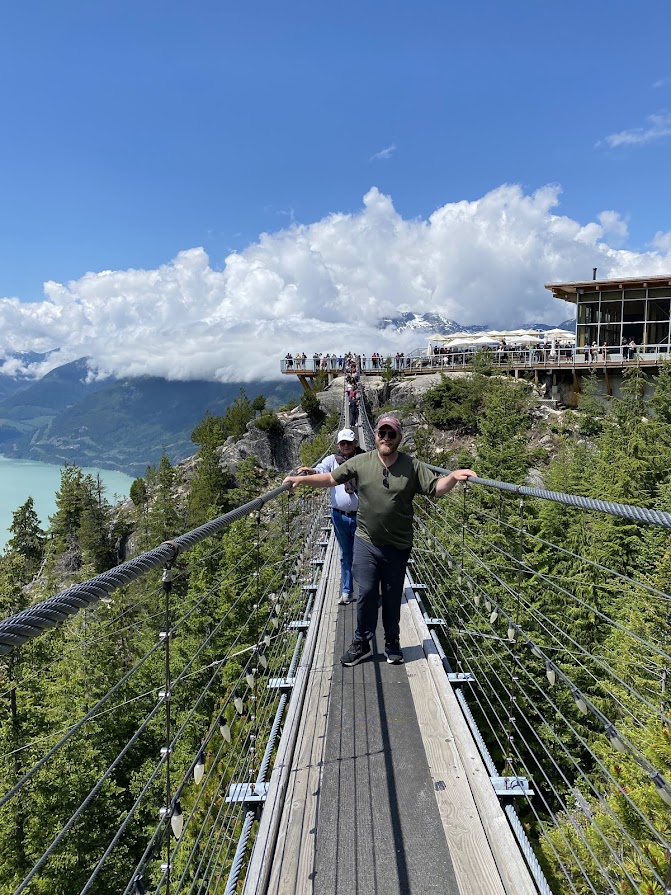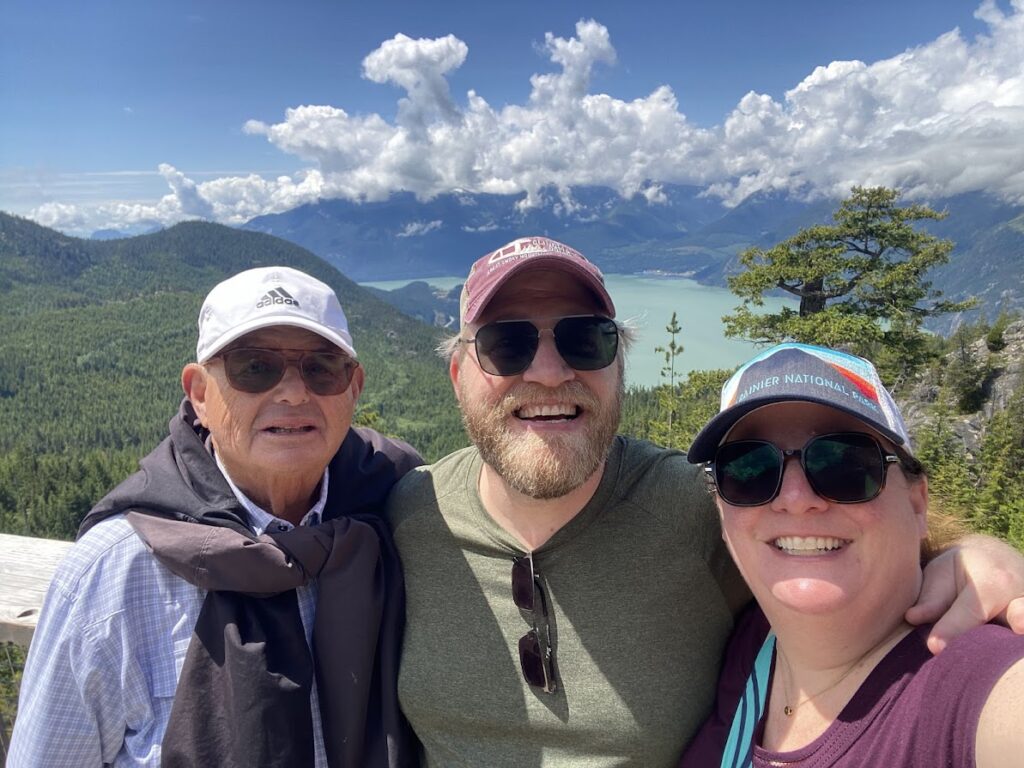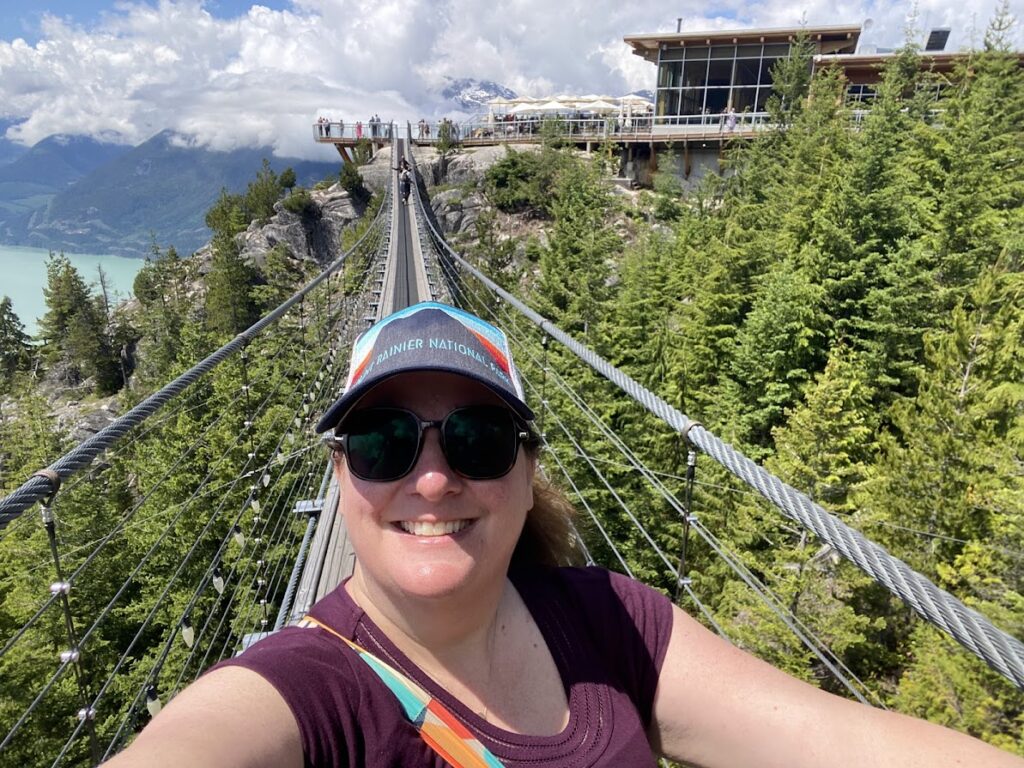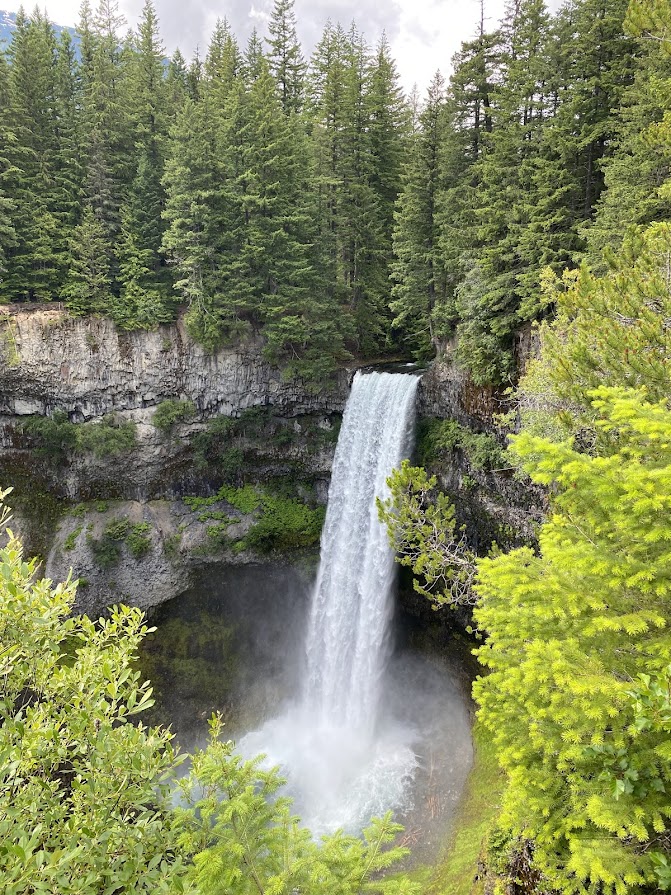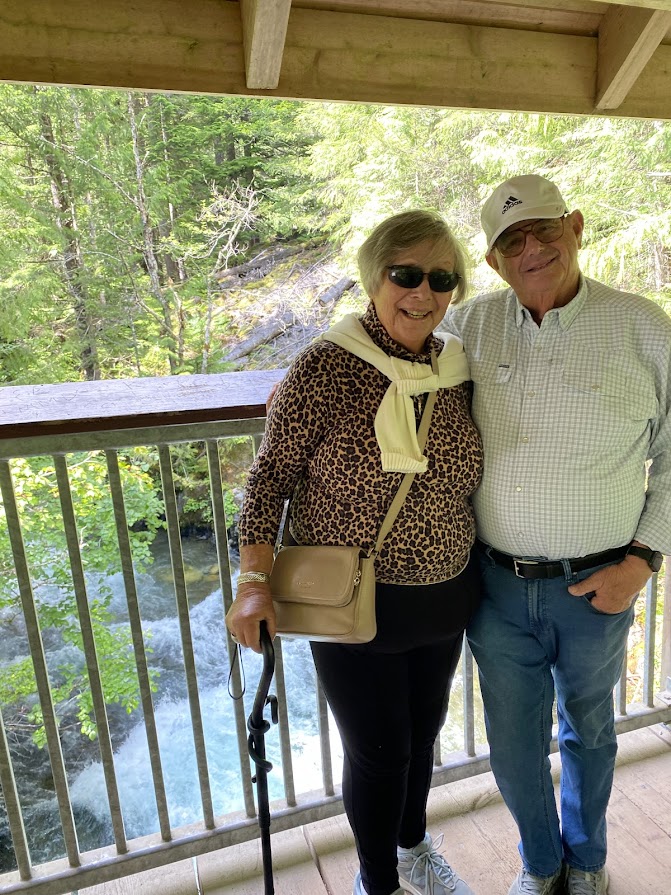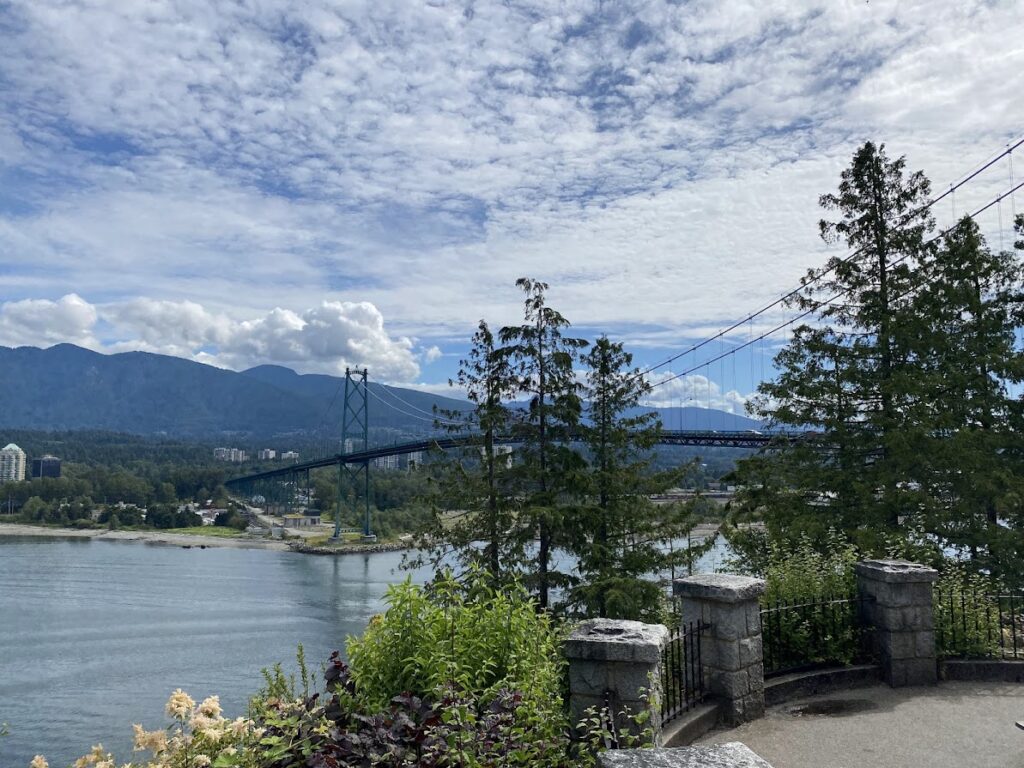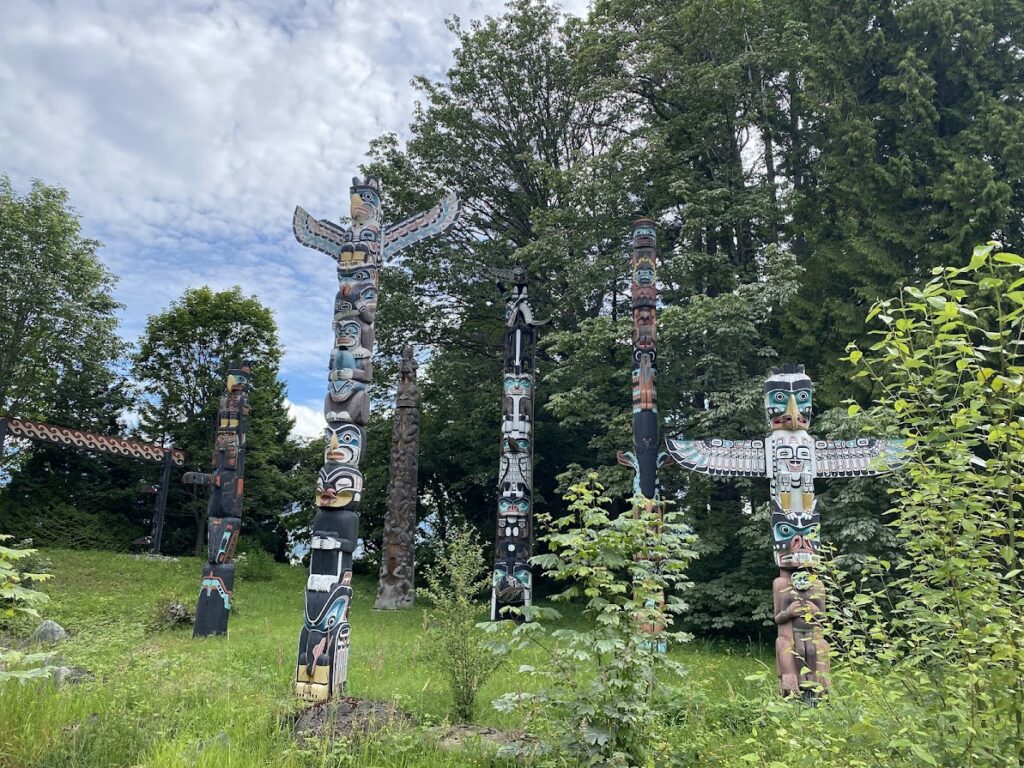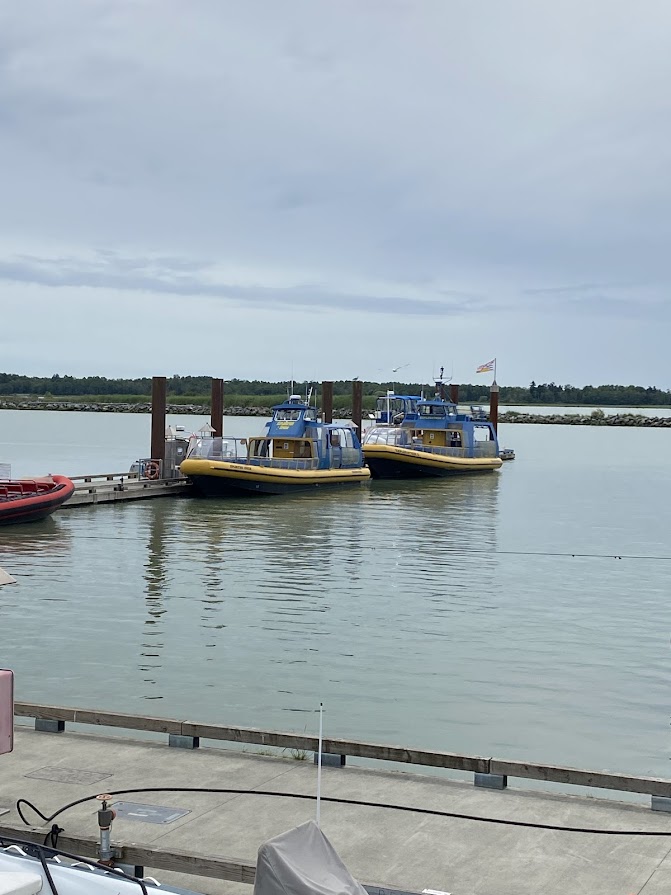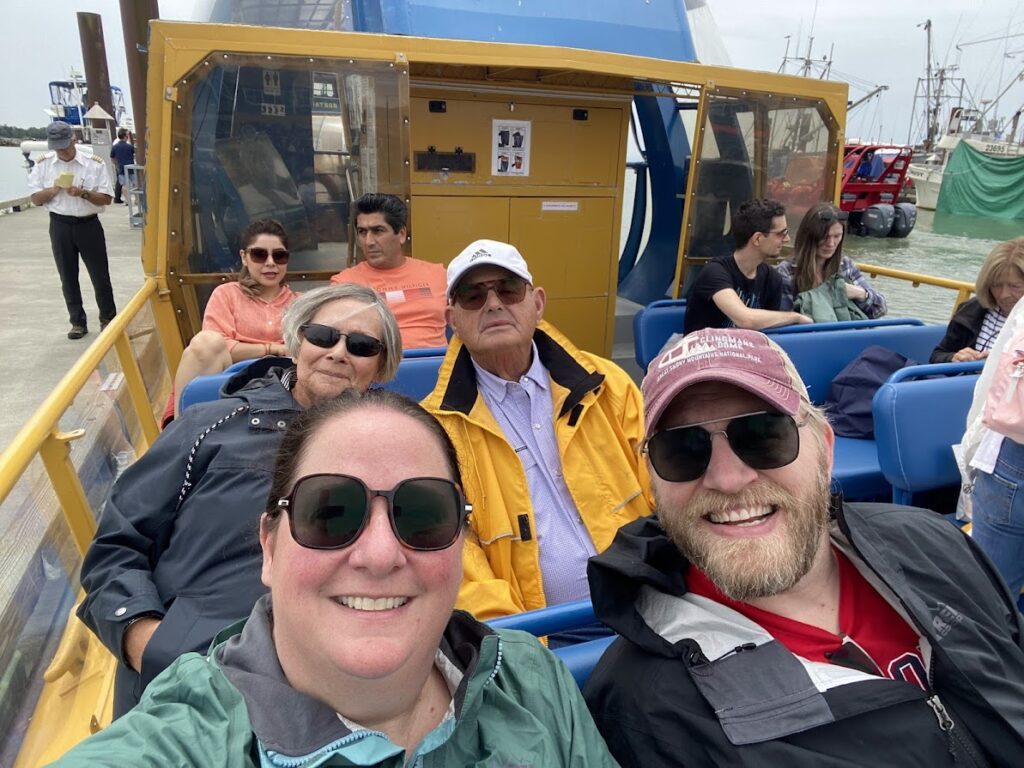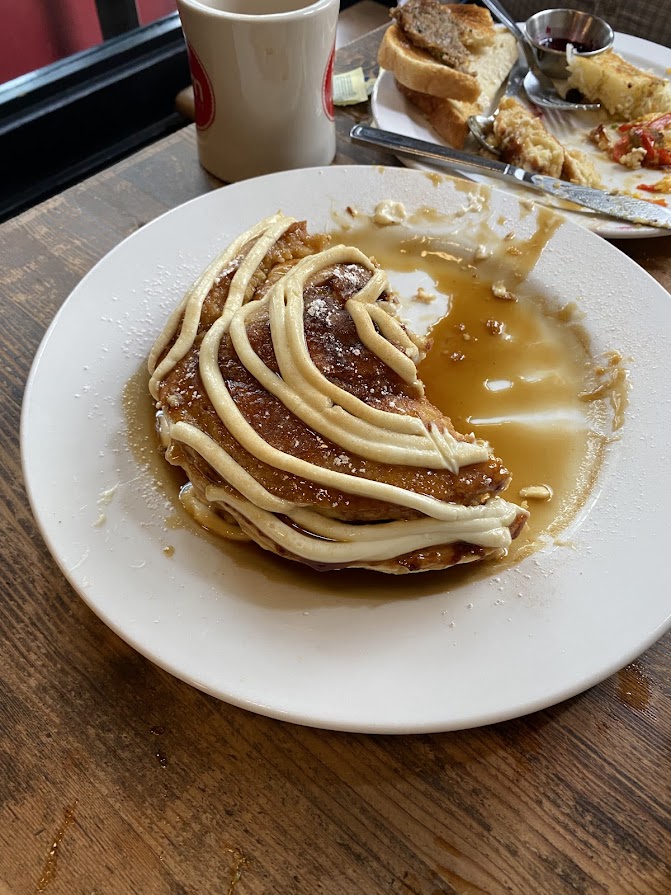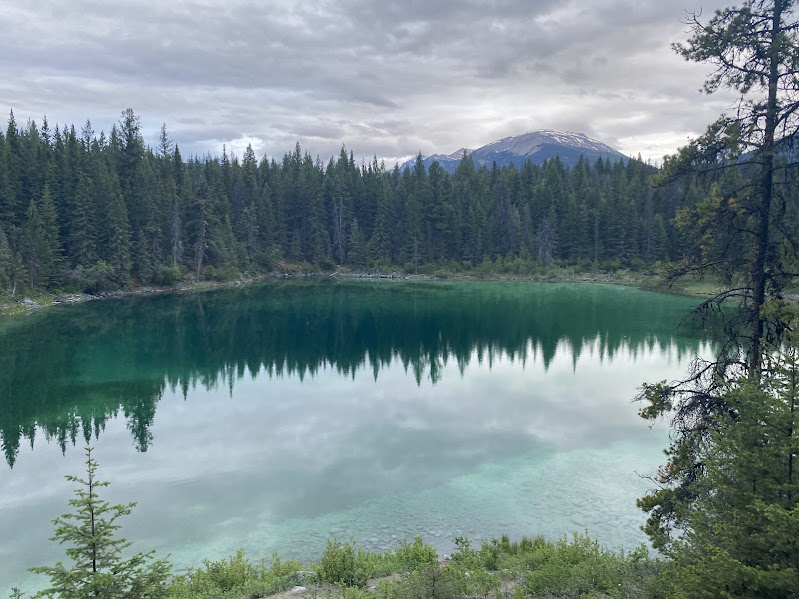
Jasper with Limited Mobility
I’ve been putting off writing this post because it makes me sad. Roughly two weeks after our visit to Jasper, much of the town and many of the places we visited were destroyed in the wildfires. As a result, I cannot say how much of this post is still accurate. Jasper was our favorite town on our Grand Western Canadian adventure, and I hate thinking that those beautiful places were destroyed or damaged by the fires.
Still…eastward to Jasper!
Canadian National Parks – The Discovery Pass
Like Banff, Jasper is located within one of Canada’s national parks, Jasper National Park. To visit Canadian National Parks, you will need a park pass or permit. Prior to departing for Canada, we purchased a Family/Group Discovery Pass online, which hangs on your rearview mirror and grants access to over 80 destinations, including Jasper, Banff, and Yoho National Parks. Current Family/Group Discover Passes cost CAD$151.25 plus CAD$4.50 for standard shipping to the USA. Purchase at least a month before your trip as standard shipping can take up to 20 days. The pass is good for one year.
Maligne Lake Cruise
Our first big adventure in Jasper was a guided cruise on Maligne Lake to Spirit Island. This excursion was incredible. The boat tour takes roughly 1.5 hours; however, the drive to Maligne Lake can take up to 1.5 hours from Jasper and is an experience in and of itself. While in Jasper, we again relied on our friendly GuideAlong tour to give us information about all the cool things we were seeing so I encourage you to use GuideAlong in Jasper as well.
While the boat tour is not cheap (prices vary from CAD$98-CAD$108), the ride to Spirit Island is worth every penny. You will want to book your cruise in advance as the cruises do sell out. The view of Spirit Island is iconic.

Two of the boats used for the Maligne Lake cruise are wheelchair accessible; however, not all of them are. If you need a wheelchair accessible cruise, reservations must be made in advance by contacting their central reservations at +1.888.900.6272. Because Dave and Peggy are both able to walk short distances, we were able to book online.
For us, this was an unforgettable experience, and we would say that Maligne Lake should not be missed.


Evening Wildlife Search
The second don’t miss activity of our visit to Jasper was the Evening Wildlife Search, a 3 hour long, vehicle-based tour where you hope to see elk, bear, moose, sheep and deer with a knowledgeable and entertaining tour guide. The tour doesn’t make any promises on what exactly you will see, but they state that they succeed in spotting wildlife on 95% of tours.
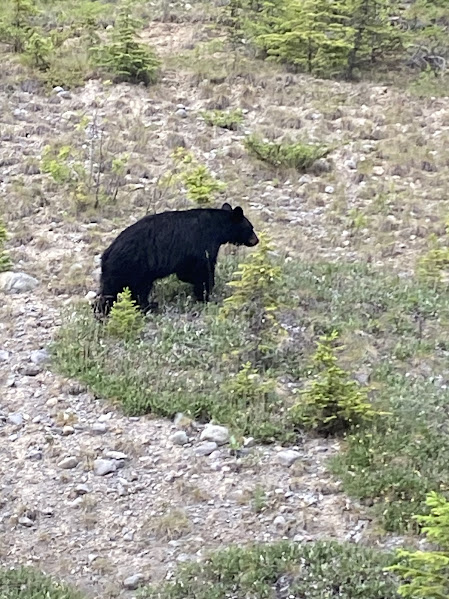
During our tour, we spotted multiple elk, several deer (including mule deer and white-tailed deer), a marmot, and several black bears. It was quite an experience. Your driver will ask passengers to keep their eyes peeled, and Ken happened to be the initial spotter on several of our animal sightings. During our visit, the black bears were gorging themselves on dandelions so I think Peggy will be telling us to look out for bears for the rest of her life anytime we pass a dandelion patch.

The tour picked us up at our hotel; however, if they don’t stop at your hotel, you can be picked up at the central meeting location. The time of your pickup will be based on the location of your hotel, but the official start time of the tour is around 5:30 pm. We suggest eating before or after joining the tour, but you may wish to bring a small snack. While there was one bathroom break, there are no scheduled stops during the route.
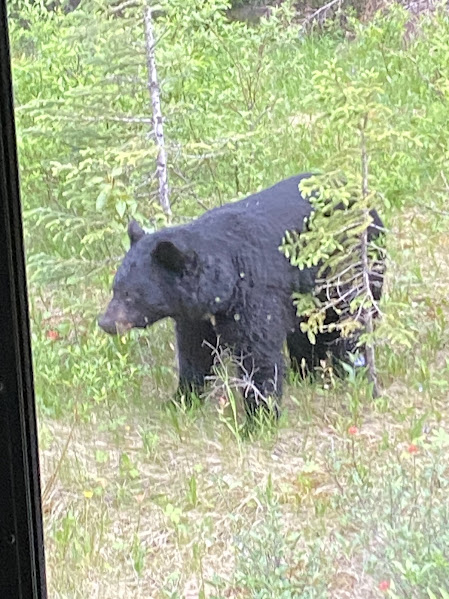
The bus for this tour is not wheelchair accessible, but it’s a great option for people with limited mobility like Peggy and Dave. The bus holds a maximum of 24 passengers, but they only sell to 21 passengers to allow extra room for guests to move around during stops.
There is no set route, and the guides follow information on wildlife movements and will do their best to maximize your chances of seeing a variety of wildlife. The wildlife tour runs CAD$79 per adult and is not recommended for children under 5 years old.
Jasper Skytram to Whistler’s Summit
Like Whistler, Jasper has a skytram, which ironically is to the summit of Whistler Mountain. The skytram is fully wheelchair accessible and transports passengers to an elevation of 7,425 feet in roughly 7 minutes. The skytram is located roughly 10 minutes outside of Jasper.

Accessible Trails in Jasper (all appear to be open post-wildfire)
There are several accessible trails in Jasper. The first trail we took was Pyramid Island, a .4 mile unpaved loop with views of Pyramid Mountain, Mount Kinross, and Cairngorm. While this trail was unpaved, Dave’s wheelchair was able to handle the trail, and Dave, Ken, and I quite enjoyed this short walk and the views.
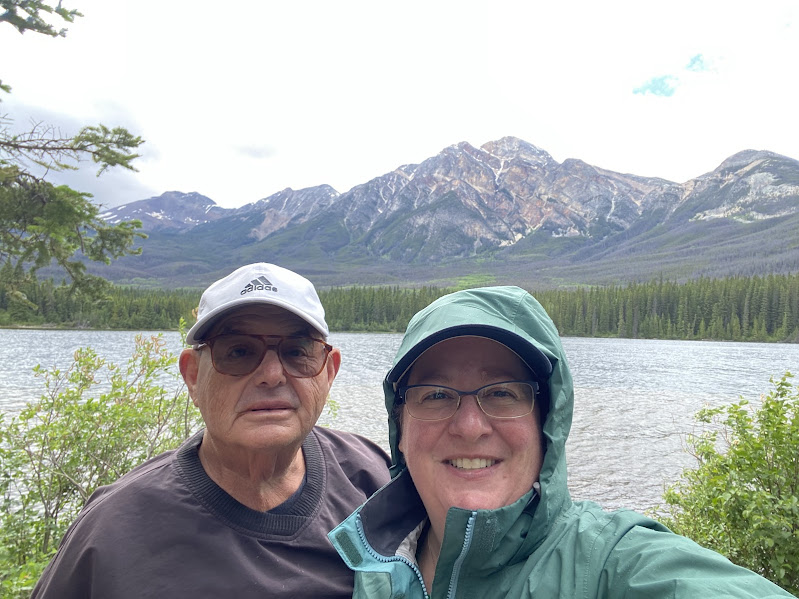
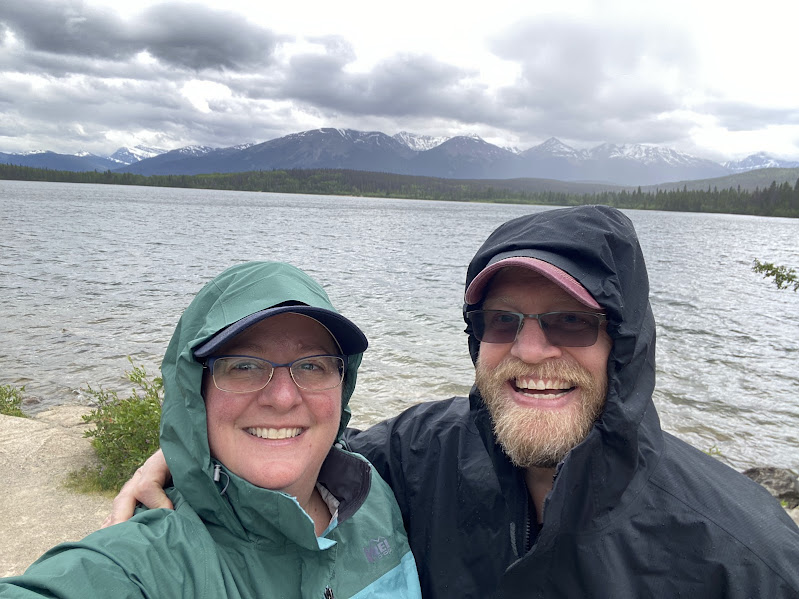
Dave and I also enjoyed a short walk along Lake Annette Loop. The Lake Annette Loop is roughly 1.5 miles on a paved trail around the lake. There is a slight amount of elevation gain and loss (roughly 280 feet total) so keep in mind that it is not entirely flat if using a manual wheelchair. My research also suggested that other good accessible options include the Mary Shaffer Loop on Maligne Lake beginning at the boathouse. There are a number of interpretive panels that will guide you along this loop. We skipped this one as Peggy was not interested, and we didn’t want a second hour long drive out to Maligne Lake. Only a portion of this trail is paved and wheelchair friendly; however, this may be a good option for those who can walk but cannot do hikes with much elevation gain. The paved portion of the trail is only 400 meters long.
Miette Road and Miette Hot Springs
One Jasper attraction we skipped was Miette Hot Springs, located out Miette road. Miette Road is a well-known spot for sighting black bears, and Miette Hot Springs are the hottest springs in the Canadian Rockies. You can soak in the hot springs pools after they have cooled to a comfortable temperature of 104 degrees Fahrenheit. Miette Hot Springs is wheelchair accessible with an aquatic wheelchair available upon request and the Hot Springs may be entered via a ramp with a handrail. The cold pools and second hot pool are not wheelchair accessible; however, they have four steps with a handrail in the middle.
Admission to the hot springs costs CAD$17.50 per person for a single entry or CAD$27 for a day pass. Towels and swimsuits are available for rental.
Non-Accessible Trails Megan Hiked (closed post-fire)
I am a big hiker, so I got up early to hike a couple amazing trails on my own while everyone else was sleeping in or getting ready to face the day. If you can get up early and hit the trails in Jasper, you will have them entirely to yourself. I didn’t attempt anything too strenuous as I didn’t want to keep Ken, Peggy, and Dave waiting, but a couple of amazing trails that I hiked were the Valley of Five Lakes (closed as of this writing) and Maligne Canyon Loop (closed as of this writing). Both of these trails are within the areas impacted by the wildfires, and it is unclear when they will reopen.
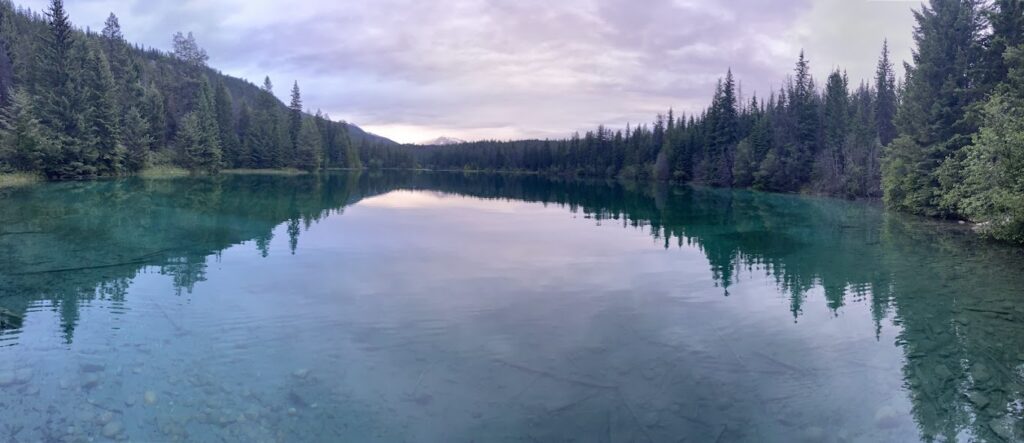
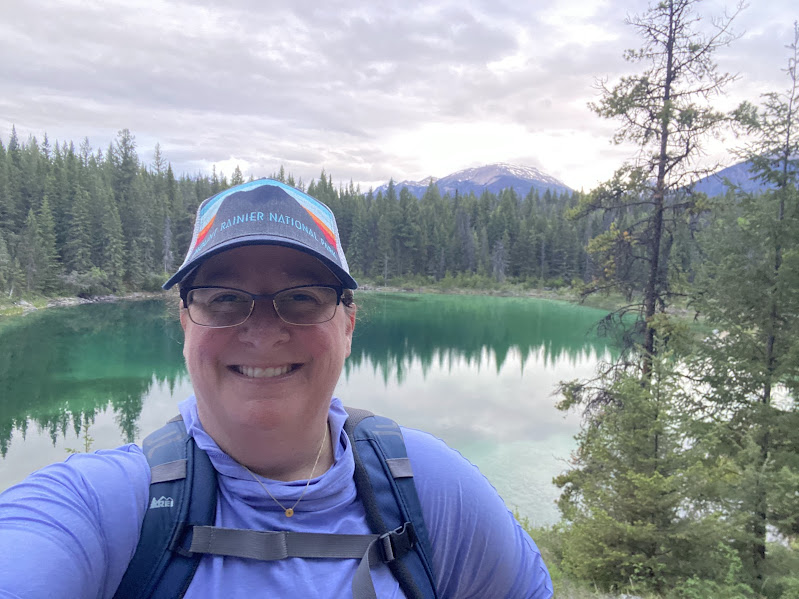

Jasper Continued
You may have noticed that I am leaving off an important part of Jasper National Park: the Columbia Icefields. I will cover the Columbia Icefields and drive along the Icefields Parkway in a separate post.
